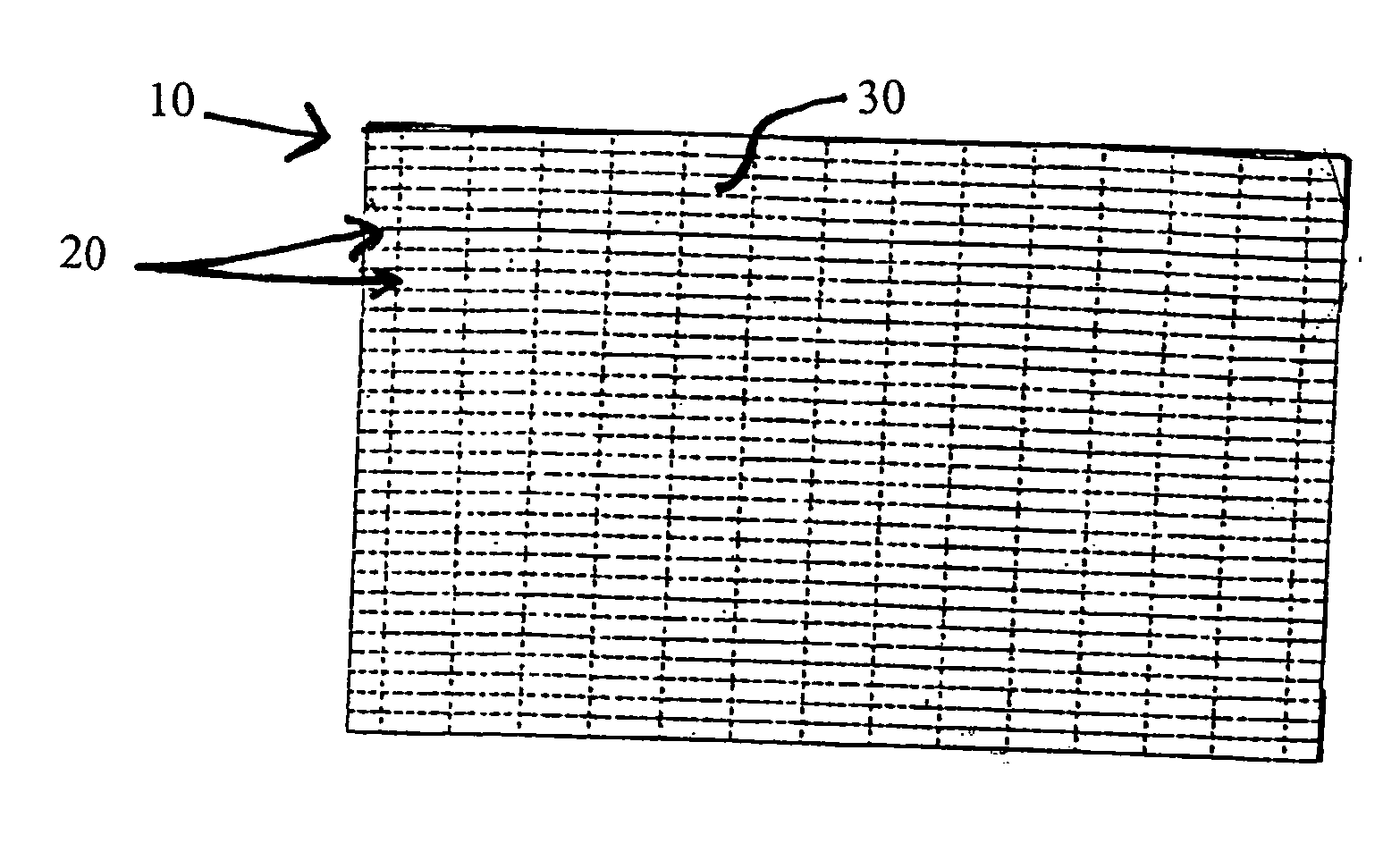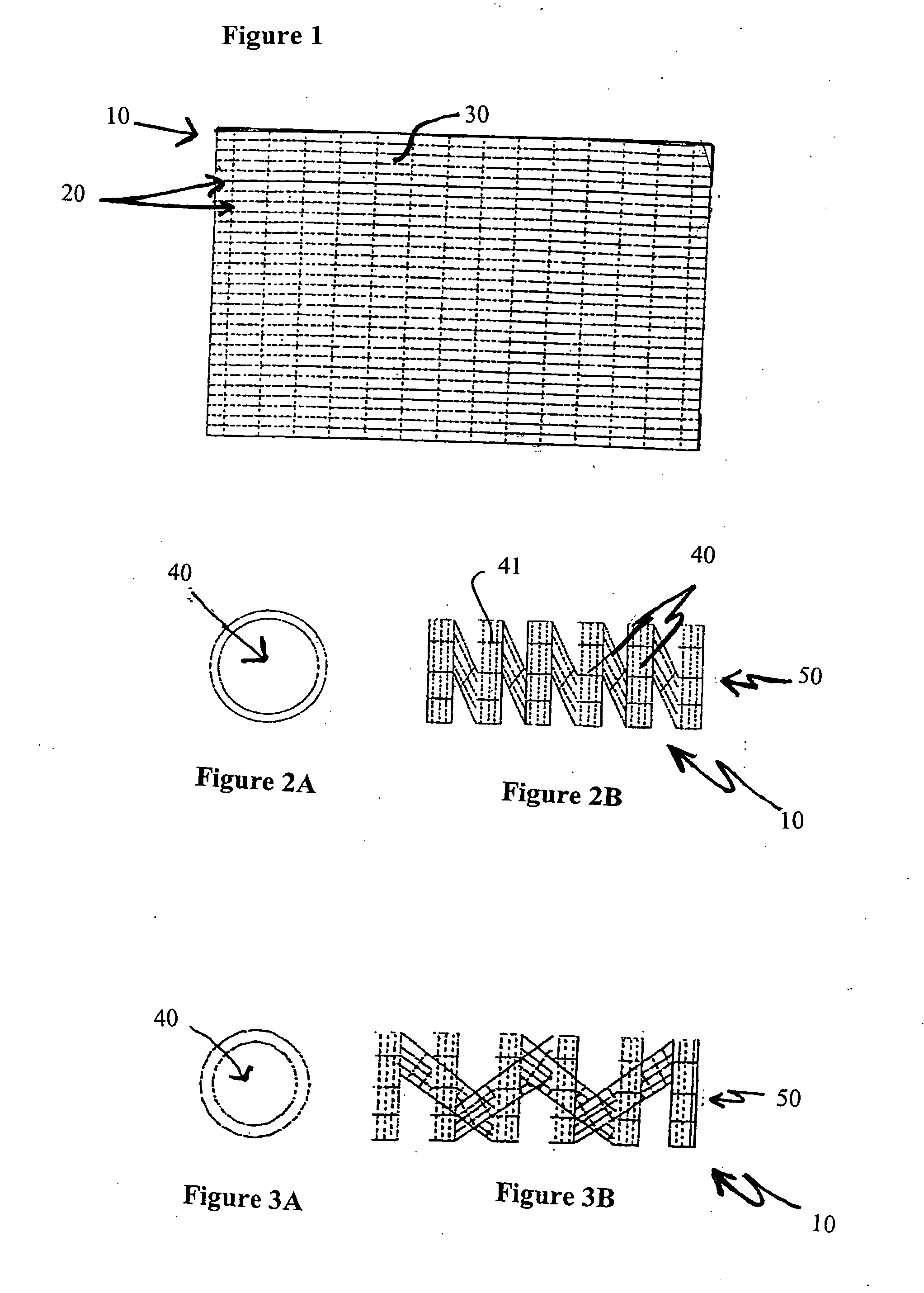Biodegradable stents
a technology of biodegradable stents and stents, which is applied in the field of medical devices, can solve the problems of affecting the quality of stents, and affecting the quality of stents, and achieves the effect of faster rate and faster ra
- Summary
- Abstract
- Description
- Claims
- Application Information
AI Technical Summary
Benefits of technology
Problems solved by technology
Method used
Image
Examples
example 1
[0048] A male patient, appropriately anesthetized, undergoes a prostrate thermal ablation procedure using conventional laser treatment devices. After successful completion of the surgical procedure, a stent of the present invention is inserted into the patient's urethra and bladder by methods known in the art. Prior to insertion of the stent, the surgeon trims the stent to size. The stent is placed at the end of an applicator. A conventional cystoscope is inserted into the lumen of the applicator. The stent and applicator are lubricated with a water soluble medical grade lubricant. A fluid reservoir is attached to the applicator as in standard cystoscopy procedures. The stent is placed in the prostatic urethra under direct visualization using a scope. Once positioned correctly, the applicator is removed, leaving behind the stent in the prostatic urethra. In approximately 28 days after implantation, the stent breaks down and is transported or passed from the urinary tract through nor...
PUM
| Property | Measurement | Unit |
|---|---|---|
| temperatures | aaaaa | aaaaa |
| mole percent | aaaaa | aaaaa |
| helical structure | aaaaa | aaaaa |
Abstract
Description
Claims
Application Information
 Login to View More
Login to View More - R&D
- Intellectual Property
- Life Sciences
- Materials
- Tech Scout
- Unparalleled Data Quality
- Higher Quality Content
- 60% Fewer Hallucinations
Browse by: Latest US Patents, China's latest patents, Technical Efficacy Thesaurus, Application Domain, Technology Topic, Popular Technical Reports.
© 2025 PatSnap. All rights reserved.Legal|Privacy policy|Modern Slavery Act Transparency Statement|Sitemap|About US| Contact US: help@patsnap.com



